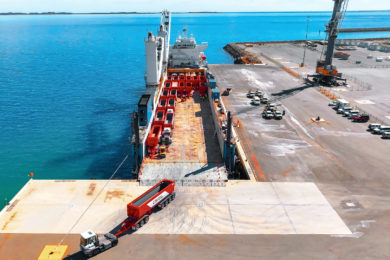CRCMining has announced an exciting mining automation event hosted by the Australian Academy of Technological Sciences and Engineering (ATSE) in Brisbane. Australia’s resource industry is being transformed by the increasing use of automation technologies that target productivity improvement through better control of mining processes. Included in this transformation are several strikingly bold initiatives to deploy autonomous mining machines into core production activities. Four eminent speakers will describe the challenges and opportunities the rise of automation in mining presents to the Australian mining industry.
Australian research organisations, technology enterprises, and mining companies are at the nexus of a fascinating global innovation story that connects research, development and technology implementation in a way that stands to profoundly change the mining industry over the next 20 years.
Professor Ross McAree, will examine Six challenges of mining automation. Whilst mining automation technologies have great potential, there’s no guarantee they will be able to deliver all that they promise. Several key challenges must be overcome. A key element to success will be the way collaboration is organised across the innovation spectrum from university-based research where key knowledge is generated through to the equipment manufacturers and technology providers who supply products to the industry and then to those responsible for site implementation and sustainment of these technologies. Specific case studies drawn from projects completed at the University Queensland and CRCMining will be used to identify six key challenges and suggest how these might be addressed.
Change management issues associated with introducing new technologies in the mining industry will be presented by John McGagh. In 2007 Rio Tinto embarked upon a program to investigate the introduction of Autonomous Haulage Systems into the Rio Tinto Iron Ore Pilbara facilities. Rio Tinto recently announced the cumulative movement of 200 Mt of material by operating autonomous fleets successfully implemented in a number of operations. Implementing advanced technologies within the confines of an operating mine demands a focus on safety and rigorous change management. McGagh will reflect on the journey to date.
Andrew Ransley will focus on Australia’s leading role in mining automation and technology. The concept of an autonomous truck is not recent. Caterpillar began exploring and testing the concept back in the 1980s although it was admittedly a proof of concept. In 1996 it demonstrated the first autonomous truck at MinEXPO in Las Vegas but it suffered two challenges:
1. Lack of appropriate business drivers and recognition of the NEED for autonomy
2. Maturity in acceptance and expert use of many of the allied technology systems required to control and give an autonomous truck operational context
In recent years these challenges have been consigned to history, with both the right business drivers and the right technologies now existing, and Australia is leading the demand for mining automation. The impact of the last mining boom in driving up wages and costs combined with increasing scrutiny on safety has made the Pilbara the world’s testing ground for robotic trucks. The new generation trucks are not remote controlled but truly autonomous, with seven safety layers of protection allowing them to operate alongside manned vehicles.
Finally Automation of shiploading: the virtual environment approach is the subject chosen by Dr Russ Morrison. This talk will detail:
- The significance of bulk exports by sea for Australia, the world’s largest seaborne exporter of coal and iron ore. $ value to Australia
- The motivation for automation of shiploading. Increasing shortage of skilled labour for 365-day 24/7 manning of the increasing number of shiploaders at remote places. But also safety and efficiency
- The shiploading process. The massive bulk ports, the ships and the loaders
- The core requirement: automation equates to removing the operator, requiring innovative sensors and appropriate intelligence to replace innate human capabilities
- The technical challenges. Control and monitoring of hold filling, collision avoidance during loading and re-location between hatches
- The virtual environment approach: the critical enabling technology. Creation of a virtual shiploading environment and its use for control, monitoring and collision avoidance









